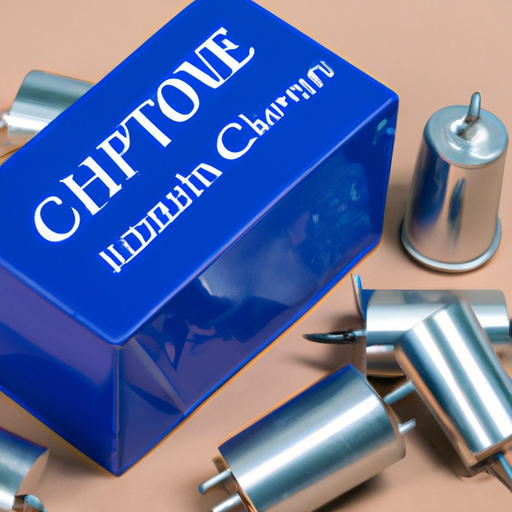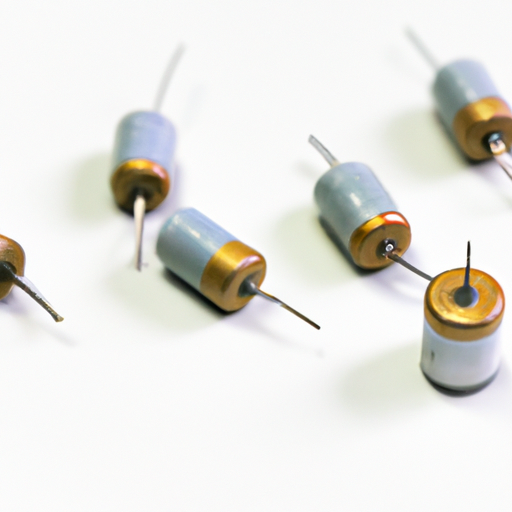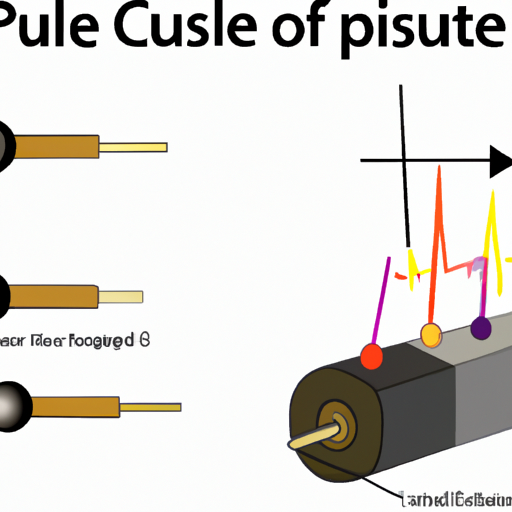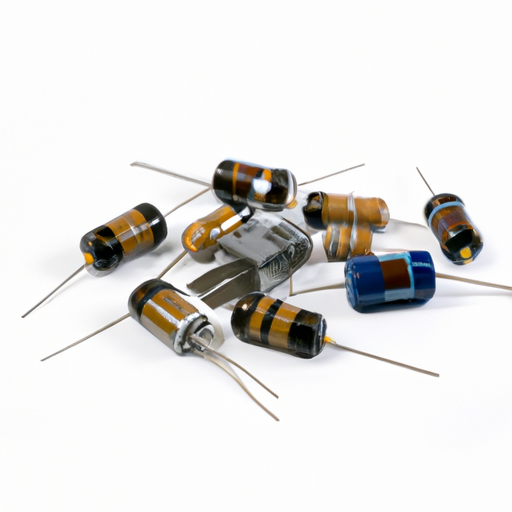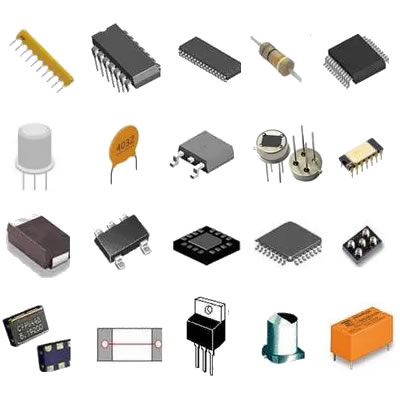What are the common production processes for high-voltage shunt capacitors?
Common Production Processes for High-Voltage Shunt Capacitors
I. Introduction
High-voltage shunt capacitors are essential components in modern electrical systems, playing a critical role in enhancing the efficiency and stability of power distribution networks. These capacitors are designed to operate at high voltage levels, providing various functions such as power factor correction, voltage stabilization, and harmonic filtering. Understanding the production processes involved in manufacturing high-voltage shunt capacitors is crucial for ensuring their reliability and performance in demanding applications. This blog post will explore the common production processes for high-voltage shunt capacitors, from raw material selection to final testing and quality assurance.
II. Understanding High-Voltage Shunt Capacitors
A. Function and Applications
High-voltage shunt capacitors serve several important functions in electrical systems:
1. **Power Factor Correction**: By compensating for reactive power in the system, shunt capacitors improve the power factor, leading to more efficient energy use and reduced electricity costs.
2. **Voltage Stabilization**: These capacitors help maintain voltage levels within acceptable limits, preventing voltage sags and surges that can damage equipment and disrupt operations.
3. **Harmonic Filtering**: High-voltage shunt capacitors can mitigate harmonic distortion in power systems, improving the overall quality of the electrical supply.
B. Types of High-Voltage Shunt Capacitors
There are several types of high-voltage shunt capacitors, each with unique characteristics:
1. **Film Capacitors**: These capacitors use thin plastic films as dielectric materials, offering excellent stability and low losses.
2. **Ceramic Capacitors**: Known for their high dielectric strength and reliability, ceramic capacitors are often used in high-voltage applications.
3. **Electrolytic Capacitors**: These capacitors utilize an electrolyte as one of the plates, providing high capacitance values in a compact form factor.
III. Raw Materials Used in Production
The production of high-voltage shunt capacitors requires a variety of raw materials, each contributing to the capacitor's performance and reliability.
A. Dielectric Materials
1. **Polypropylene**: This is a common dielectric material for film capacitors, known for its high insulation resistance and low dielectric losses.
2. **Polyester**: Another dielectric option, polyester capacitors are often used for their cost-effectiveness and decent performance.
3. **Ceramic Materials**: Used in ceramic capacitors, these materials provide high dielectric strength and stability under varying temperature conditions.
B. Conductive Materials
1. **Aluminum**: Often used for capacitor plates, aluminum is favored for its excellent conductivity and lightweight properties.
2. **Copper**: While more expensive than aluminum, copper is sometimes used for its superior conductivity, especially in high-performance applications.
C. Insulating Materials
1. **Epoxy Resins**: These materials are commonly used for encapsulating capacitors, providing excellent insulation and protection against environmental factors.
2. **Polyethylene**: This is another insulating material that offers good dielectric properties and moisture resistance.
IV. Production Processes
The production of high-voltage shunt capacitors involves several key processes, each critical to ensuring the final product meets performance standards.
A. Design and Engineering
The production process begins with design and engineering, where specifications and standards are established. Engineers use simulation and modeling techniques to predict the performance of the capacitor under various conditions, ensuring that the design meets the required electrical and mechanical specifications.
B. Material Preparation
Once the design is finalized, the next step is material preparation. This involves sourcing high-quality raw materials and conducting quality control checks to ensure they meet the necessary standards. Pre-treatment processes may also be employed to enhance the properties of the materials before they are used in production.
C. Dielectric Layer Formation
The dielectric layer is a critical component of high-voltage shunt capacitors. For film capacitors, this involves film extrusion, where the dielectric material is melted and formed into thin sheets. In the case of ceramic capacitors, ceramic processing techniques are used to create the dielectric layers, which are then fired at high temperatures to achieve the desired properties.
D. Assembly of Capacitor Elements
After the dielectric layers are prepared, the assembly process begins. This typically involves layer stacking and winding, where the dielectric layers are combined with conductive materials to form the capacitor elements. The terminals are then connected to facilitate electrical connections.
E. Encapsulation and Insulation
Once the capacitor elements are assembled, they undergo encapsulation and insulation. Insulating materials, such as epoxy resins or polyethylene, are applied to protect the capacitor from environmental factors like moisture and dust. Sealing techniques are employed to ensure the integrity of the capacitor over its operational life.
F. Testing and Quality Assurance
The final step in the production process is rigorous testing and quality assurance. Electrical testing is conducted to measure parameters such as voltage, capacitance, and leakage current. Mechanical testing, including vibration and thermal cycling tests, ensures that the capacitors can withstand the stresses of real-world applications. Compliance with industry standards, such as those set by the International Electrotechnical Commission (IEC) and the American National Standards Institute (ANSI), is also verified.
V. Challenges in Production
The production of high-voltage shunt capacitors is not without its challenges.
A. Material Sourcing and Cost Fluctuations
The availability and cost of raw materials can fluctuate significantly, impacting production schedules and costs. Manufacturers must develop strategies to mitigate these risks, such as establishing long-term contracts with suppliers or exploring alternative materials.
B. Maintaining Quality and Consistency
Ensuring consistent quality across production batches is crucial for the reliability of high-voltage shunt capacitors. Manufacturers must implement stringent quality control measures and invest in advanced testing technologies to monitor production processes closely.
C. Environmental Considerations and Regulations
As environmental regulations become more stringent, manufacturers must adapt their processes to minimize waste and reduce their carbon footprint. This may involve investing in more sustainable materials and production techniques.
VI. Innovations and Future Trends
The capacitor manufacturing industry is evolving, driven by advancements in materials science and technology.
A. Advances in Materials Science
Research into new dielectric and conductive materials is ongoing, with the potential to improve the performance and efficiency of high-voltage shunt capacitors. For example, the development of nanomaterials could lead to capacitors with higher capacitance values and lower losses.
B. Automation and Smart Manufacturing
The integration of automation and smart manufacturing technologies is transforming the production landscape. Automated processes can enhance efficiency, reduce labor costs, and improve precision in manufacturing.
C. Sustainability in Capacitor Production
As sustainability becomes a priority for many industries, capacitor manufacturers are exploring eco-friendly materials and production methods. This includes the use of recyclable materials and processes that minimize energy consumption and waste.
VII. Conclusion
High-voltage shunt capacitors are vital components in electrical systems, providing essential functions that enhance efficiency and stability. Understanding the common production processes involved in their manufacturing is crucial for ensuring their reliability and performance. From raw material selection to rigorous testing, each step in the production process plays a significant role in the final product's quality. As the industry continues to evolve, innovations in materials science, automation, and sustainability will shape the future of high-voltage shunt capacitor production, ensuring that these critical components meet the demands of modern electrical systems.
VIII. References
- Academic journals on capacitor technology and materials science.
- Industry reports on trends and challenges in capacitor manufacturing.
- Standards organizations such as IEC and ANSI for compliance guidelines.

